Starting seed in basement - questions about best set-up
Hi everyone! I’m so excited to be finally starting a cut flower garden for myself, and have been doing research on starting my annuals from seed (I’m doing zinnias, poppies, phlox, cosmos and some greenery fillers). I’m hoping to get some advice on my best options for setting up seed trays for best results. We have a basement that’s unheated, but is really the only space we have to start all my seed trays Bessie’s the garage (which is even colder). During these cold winter months in my zone (5), the average temp in the basement is about 45 degrees F, which is too cold (from what I’ve read, it should try to get to 65 degrees minimum). If I buy the heat mats, the cost would add up rather quickly because I have about 500 seeds I’m starting indoors (I know, i’m overly ambitious for a first-timer). I thought of maybe buying one of those portable greenhouses on wheels that would be large enough for all my trays and using that for the germination process in the basement for warmth? I’m not sure if it would even get warm enough, though without any light.
Once I have sprouting, do I need to continue with bottom heat as well? Will the overhead lights I plan to install for light be warm enough for them if the temperature continues to be 45-50 degrees? I worry it will still be too cold, especially when the timer turns them off for a few hours. We’re trying to avoid putting a space heater in there if possible, but if That’s the best option, we can plan to do that, too.
Any help, information, resources, or suggestions are welcome! If I need to buy heat mats for all the trays, that’s fine because I know they’re an investment. But I just wanted to see if there's a more economical way to go about it right now (the portable greenhouses that would fit all my trays are about $60-$70, which would be much less than the cost of all the heat mats).
Comments (18)
ken_adrian Adrian MI cold Z5
3 years agofirst thought.. do NOT plant all your seeds this year ... try a few of each.. and see if you can get them to the great outdoors in spring .. else i fell you will fail.. and lose all your seed ...
you might need two greenhouses ... the first.. some sheets of plastic hung from the ceiling to create a room.. with the heater.. and then an inside tent.. with your seed trays ... your smaller interior tent need not be very big.. if you are just learning with a few trays ..
there is no problem with 24 hour light ... you dont need to turn them off and lose all your warmth ... or the alternative.. put the heat mats on a timer.. so its on.. when the lights are off ...
when setting up this type of operation.. start up costs are usually rather high ... and it is hard to do it on a severe budget ... so good luck with that ...
lastly ... where are you.. big city name ... we need to figure out.. when these might go outside ..., .and count backwards and figure out germination time.. and figure out how late you might start this ... in my MI ... mid january.. is probably much too early ... and if you can stretch the further into march .. then all your temp problems start becoming lesser ... which gives you a couple months to figure this out ...
there are other forums where you might get more guidance ... perhaps others can make suggestions ...
ken
ps: when dealing with all this electricity and water ... make sure all your outlets are protected ... i am totally blanking on.. oh.. ground fault protected ... no use getting shocked .... https://www.dfliq.net/blog/what-is-gfci-outlet/Sam HomeOwner
Original Author3 years agoHey there, Ken! Thank you so much for all this wonderful info! Actually, believe it or not, i’m Starting with 50% of my seeds, and having the other half for next year. I ordered a lot of varieties because i’ve been wanting to do this for a few years now and just kind of went all in.
I don’t know why I didn’t think about your suggestion for hanging plastic sheets to just make a greenhouse in a section of our basement! That’s actually perfect and when I told my husband, he was already on board and also a little embarrassed he didn’t think of it. That should work nicely with a space heater. Or would you think heating mats as well as the space heater?
I think tbis will will work nicely and hopefully i’ll learn from any mistakes I make this year to improve on next year.
I understand the investment, so i’m happy to do what’s needed. I’m tired of using my mom’s yard a few hours away (she direct sows, though and always has blooms much too late in the season for my taste).
The closest city to me is NYC and my last frost date is estimated for end of April, but i’m planning on my outdoor planting between mid and late May after a hardening off.Related Professionals
Windham Landscape Architects & Landscape Designers · Maple Valley Landscape Architects & Landscape Designers · Palm Springs Landscape Architects & Landscape Designers · Conroe Landscape Contractors · East Haven Landscape Contractors · Fort Myers Landscape Contractors · Melrose Park Landscape Contractors · Houston Carpenters · Cartersville Fence Contractors · Foster City Fence Contractors · Brooklyn Park Landscape Contractors · Federal Way Landscape Contractors · Stony Brook Landscape Contractors · Palo Alto Decks, Patios & Outdoor Enclosures · Highland Decks, Patios & Outdoor EnclosuresUser
3 years agoI do this here in PA, although my basement is heated. With usually about 850 plants a year--12 flats, usually plus a few that stand at the edges of the shelves. In my case, 100% of the gardens come from my downstairs sprouting stations.
Don't cheap out and get inexpensive shelves that aren't sturdy, won't last, and don't handle heavy weights well. Mine are built like the Pyramids. They're on year...twelve?...or so and look like the day I purchased them. They weren't cheap, but I don't regret a single cent I spent on those.
Choose shelves tall enough to accommodate your plants! Dwarf marigold, ageratum...easy. Regular marigold...harder. Salvia...harder still. I use the top shelf and a bracket on the ceiling for the lights for my tallest items, giving me 2 flats for things that can be up to 2 feet tall by the time they go out.
Space heaters shouldn't run unmonitored. Just be sure to mind every safety rule and check on it regularly. Cheaper might simply be a fan blowing gently from your upper level into the cellar, circulating warmed first-floor air downstairs.That could be potentially problematic if you have an undiagnosed radon problem, of course...
Plan on starting things at their appropriate times, probably upstairs in a convenient location on one or two heat mats, the top of the refrigerator, and so on. That's easiest for me, and faster as well. At, perhaps, sixty degrees, some things won't germinate at all. Others will do so only very slowly. One or two might not mind. Do the research on each plant variety, but as a general rule, the further south the plant comes from and the more summery the blossom, the warmer it likes to germinate. :-)The appropriate times, growing them cool (which isn't a bad idea, actually) is a bit earlier than the typical recommendation. Even my tall zinnia started on March 25th with a set-out date of May 1 for hardening off. Ageratum, salvia (blue and red), Easter Egg plant, and Profusion zinnia (a different species) started the earliest around March 1st. My last frost date is technically April 20th, but I play it by ear and usually plant May 5th to 15th, depending on the weather.
I keep a temperature sensor on the middle shelf with a readout in my home office so I can see the temperature. Even without plastic, the temperature difference with the lights on is impressive. Radiant heat really does make a difference. In my case, I use twin fluorescent lights, each with 2 bulbs in them, for 2 each warm and cool fluorescent lights (cheap and easy to work with). 12,000 lumens per shelf, pretty high on the PAR (Plant Available Radiation) as well. Those are on 17 hours a day during sprout and growth. That can bring marigolds from just post-sprout (done upstairs) to blossom just under the lights. They're hung on chains that I can adjust so the lights can move higher as the plants grow.Again, that's not the cheapest, but it's the most reliable. There have to be several failures in the chain to cause a problem, the light is bright enough for full sun plants, and growth is consistent--and bud production can occur under light that bright.
24 hour a day lighting can be a bit of an issue in that many plants do require a night cycle, both as a key for blooming and growth. Plus it can make it a bit harder to adjust them outdoors as they're moving into an environment where the day length is vastly different. I try to minimize shocks. Fortunately, once sprouted, they'll tolerate somewhat cooler weather, although again, check the tolerance of what you grow. Some sprouts really don't like dropping under 55 degrees, 50 degrees, 45 degrees... The lowest my basement tends to fall in the winter is about 58.
Feeding is a bit touchy in these conditions and this is where about half the people around here are about to become pointlessly outraged because I don't quite do things the way standard gardeners do them. The environment is constrained, water can't easily leave the system, or drain away, salts build up, and that's not good for the plant. On the up side, they're not in these environments for long, so we don't have too much to worry about, and growth is very fast. On the down side, light levels aren't sunlight, temperatures aren't summer, and conditions aren't normal. All I have to say is, "It works" while I point at my gardens every year.When starting seed, start with damp soil. Moist, like a sponge. Once they start to grow a bit, you can feed with anything you want for most things. I'm going to recommend a little liquid kelp added to the Whatever You Want, but just a little. A couple drops per app. Too much is not better. I use Miracle Gro (actually, I make my own, but the mix is reasonably close to this with far more N and far less P and K for a long list of reasons; this is fine for your starting plants).
Just feed at about 1/6th rate the first time. Then add water the next time. Then feed at 1/4 rate. Then water. Then 1/4 rate. Then water. Keep alternating. If the growth is getting leggy, use more water. If the greenery seems pale and you used the lighting I did, feed a bit more.
Aphids, Spider Mites: Welcome to my world. Slugs, sometimes, too. These won't happen with bought seeds, but do when you start collecting your own, and sometimes with soils. Most commercial basic insecticides for use indoors will knock them out. The slugs, I just used Sluggo, which is perfectly safe for use in the cellar, plus I picked off the ones I could see.
Fungus, Damp-Off Fungus: Yuck. You start stuff and a Ring of Death begins in the middle of something. Stop, pull the flat, and destroy it. That's going to spread fast. Sometimes I'll isolate it upstairs, soak it in a mix of 1 part hydrogen peroxide and 9 parts water (down to 4 parts water depending on how far along the plants are) and try to stop the fungus. It works about eighty percent of the time on older plants, ten percent on babies. I don't generally bother on babies any longer. If the babies are something I collected, I have spares anyway.
Collecting your own seeds: I do it every year, and have envelopes full of a dozen species. There are forums around here just on this topic, although I don't generally chime in there. Ageratum, salvia, ornamental eggplant, some zinnia, cosmos, dwarf cosmos, Melampodium, the list continues. They're all pretty easy to collect. I have less luck with marigolds, strangely.Sam HomeOwner thanked UserSam HomeOwner
Original Author3 years agoThank you so much morpheuspa! This was all so incredibly helpful - I really appreciate your time. I took some notes to keep nearby when it's time to start the seeds :) I definitely planned to harvest my own seeds as well - I'm actually looking forward to that quite a bit, so we'll see how it goes. We plan to get the plastic tarps up this weekend and start our set-up so we're ready in plenty of time for my first sowing. Thank you again so much!
Sam HomeOwner
Original Author3 years agoHi Dee! Oh wow - I've never heard of this method before. I'll definitely have to take a look. Thanks so much for taking the time to reply - I appreciate it :) That's so great to hear that you've been able to sell your flowers at local markets. What types of flowers do you grow with this method?
diggerdee zone 6 CT
3 years agoSam, I grow EVERYTHING! The only thing I did not have good luck with was green beans. They always seemed to rot before germinating. To give a quick list off the top of my head, I grew these flowers:
alyssum
zinnias
cosmos
snapdragons
ageratum
gomphrena
strawflowers
nigella
bachelor buttons
Chinese Asters
marigolds
sunflowers
celosia
amaranthus
rudbeckia
tithonia
penstemon
foxgloves
columbines
sedum
portulaca
cleome
echinacea
Phlox
poppies
statice
salviaAnd more. Veggies and herbs too - tomatoes, cukes, peppers, eggplant, carrots, onions, lettuce and greens, basil, parsley, cilantro, dill.
IMO, it's just such an easy way to start seeds. I always had problems with damping off, and darned if I didn't bring everything outside to harden off and then forget to bring them in at night lol. This to me is just easier, I have good germination rates, the plants are hardy, and I don't need any special equipment.
I just wanted to bring it to your attention. Like I said, some prefer to start indoors, but I wanted to share this option.
:)
DeeUser
3 years agoI actually never bring things in at night during hardening off. :-) Once out, they're usually out, barring frost. They just live in a very sheltered locale.
Gawdinfever Z6
3 years agoSam, most perennials and any hardy annuals are prime for winter sowing. The hardy annuals are best started the latest, but I've had good luck with them! I started out this way after exchanging seeds and I now have way too much garden for one person! (But I wouldn't have it any other way!)
User
3 years agoFor us, if we "winter" sow with bought seed, it's actually "spring" sowing. Plant in April or extremely early May, right about the time that a sprout won't die if it sprouts really fast. Bought seed has already slept and is ready to pop, so you don't want to winter sow it as it'll shoot up too early on average.
I don't have much luck with this as my soil is heavy and very silty, plus extremely high in organic matter. I'm more successful indoors, really.
(To confound fungi, don't overwet your flats and water from the bottom, which you'll need to do anyway. Spray initially with a mix of Daconil in water when you plant the seed to set back damp-off fungus; it works beautifully. One bottle of Daconil will last you about 300 years for 12 flats a year. At first sign of any fungi, use more Daconil or a stronger anti-fungal if necessary; I use Rose Pride if I detect something brewing).
Collected seed will winter-sow much better. We don't do the preservation process as well. For us, I generally understand that it should be spread in late March when winter's pretty much ending, but I don't really do the process due to my soil. Some things do it naturally in my garden, like Melampodium, though!Jay 6a Chicago
3 years agoBought seed still has to have a cold period if it's a species that requires cold treatment, unless the vender sells them already cold stratified. Zinnia, Poppies, Phlox,(annual drummondii) and Cosmos don't require cold treatment, so there's no point in winter sowing them. Maybe you could elaborate on the exact species you're planning on growing? There's several different species of Phlox and poppies, and exactly what greenery fillers are you talking about? If you do sow them outside, they won't have the head start you want. I guess you'll just have figure out a way to provide a 70 degree temperature. You could grow them upstairs in the house? I also start plants inside under lights to give them a head start. If your basement is 45 degrees, then a heating mat probably won't be enough to raise the temperature and you'll have to use a space heater, just be careful that the heater isn't damaging your plants, or drying out the air once you remove the domes. One more thing. Poppies resent being transplanted so they would do better in peat pots, or being direct sown. They grow faster outdoors than Phlox and Cosmos.
User
3 years agoThat, too--but most seeds don't mind a cold period, either, just to stress that (I have the fear we're really confusing Sam HomeOwner here). Some do, but most will be just fine with it. Tropical, subtropical, and southern temperate plants (northern hemisphere) are the ones most likely to object to cold periods for their seeds.
And yes, there are a list of plants that transplant, at best, poorly. Poppies, sunflowers, morning glories, most root crops if you grow those...
If we had a list, this would be a lot easier.
Sam HomeOwner
Original Author3 years agoHi all! Oh wow, i’m So grateful to have so many people willing to share such great information! I’m taking it all in, and no worries, it’s not too confusing yet :) I’m enjoying this whole process and learning new things so I’m looking forward to researching all of this.
diggerdee zone 6 CT
3 years agolast modified: 3 years agoFor what it's worth, I never save my own seed, I always buy, and I always wintersow. Here in my zone 6, in my 20 years or so of wintersowing, I've only had to worry about losing my seedlings to cold about 4 or 5 times, when I had to run out on an evening to throw a sheet over my containers if a sudden frost was forecast. And I've never lost any seedlings due to cold.
With the climate change and temps fluctuating so wildly now, it's more the heat that is worrisome. Seems we're more likely to have an odd 90-degree day in April, when the sudden heat might fry the seedlings. THAT is a pain because I have to move sometimes up to 200+ containers in the shade, make sure they're watered, and then move them all back the next day when the temps are "normal". But even that has happened maybe one day in each of the last three years. A PITA but IMO still worth sowing by this method.
There are indeed some things that don't do well with transplanting, like poppies, (interestingly never knew that sunflowers were on this list and never had a problem, knock on wood!) but I still wintersow. I don't wintersow anything directly because I know in spring I'll just go through and pull them as weeds lol. Plus I mulch my beds in late winter (which now that I think about it doesn't help all that much with said weeds lol) and I always wonder if the mulch will inhibit the seed germination. Apparently not, going by the weeds haha.
Sam I do believe you will find several lists about all this stuff on either the FAQs or on the wintersown site, although honestly I haven't been on either in years. But if you need more info look there and I think you'll find what you need. You can always sow a few containers and see how you do and decide for yourself whether this will work for you or not.
:)
DeeSam HomeOwner thanked diggerdee zone 6 CTken_adrian Adrian MI cold Z5
3 years agoyou said something like.. you are going to sow half your seeds this year.. and half next year ...
i will repeat ... you need to start just a few of each .. so when you fail wildly you still have seed to plant outdoors this spring and next ...
if you had a working basement system.. and vast experience ... the answer would be different.. but you dont ... and for you to perfect ever possible variable will take a lot of trial and error ....
so just start small with a cell pack of each type .. and learn all you can.. and go whole hog next year ....
you have peeps with decades of experience making it all sound so easy ... i wonder what each of them would tell about the first year they tried ... dont forget.. the definition of a green thumb sometimes includes that you need to kill every plant 3 times ... before you learn all you need to grow it easily ....
ken
now.. there.. i said it.. lol ... now some other thoughts...
never forget.. the most important thing in a pot is the media ... never the plant ... buy good media.. and sterilize it before you start
https://tipnut.com/sterilize-soil/
and in the meantime.. sterilize everything else with a 10% bleach wash .. tools.. pots.. watering cans.. etc.. EVERYTHING ....
it much easy to avoid a problem.. rather than solve or cure one ...
get a carpet remnant and put it on the floor.. and perhaps cover it with thick plastic ... insulation from the cold floor ...
light fixtures can be made adjustable with hardware chain .... i liked this stuff ... because you could open and close it with pliers... and obviously you dont need a ten mile roll if it.. its usually sold by the foot rather cheaply ...
https://duckduckgo.com/?t=ffnt&q=%2314++Zinc+Plated+Steel+Jack+Chain&ia=webzen_man
3 years agolast modified: 3 years agoHi Sam,
" I’m so excited to be finally starting a cut flower garden for myself, and have been doing research on starting my annuals from seed (I’m doing zinnias, poppies, phlox, cosmos and some greenery fillers). I’m hoping to get some advice on my best options for setting up seed trays for best results. We have a basement that’s unheated, but is really the only space we have to start all my seed trays, besides the garage (which is even colder). "
Your lights will act as a heat source, and seedling heating pads will also if you use them. I have a lighting setup in our indoors downstairs basement utility room. I started my indoor growing when we lived in Maine back in 2005. At that time Home Depot was selling two-bulb T8 fluorescent shoplights for a bargain price, and a user here, Zink (a participant here in Garden Web), told us how to overdrive those shoplights for nearly double the light output. T8 fluorescent bulbs are rated for 20,000 hours, and I am still using many of my original bulbs. Many of my T8 fixtures are overdriven, but lighting technology has advanced a lot and my T8 setup is totally obsolete. But it works fine and it is paid for, so I will continue to use it, although it was already totally obsolete when we moved here in 2010.

I use chrome plated steel wire shelves as my plant stands, and they are still in "like new" condition. Most books on growing indoors under lights are now obsolete, but this one is reasonably up-to-date and I recommend it instead of trying my obsolete methods.
Gardening under Lights, The Complete Guide for Indoor Growers
I have some zinnia seedlings growing now. They will probably be in full bloom when I set them outdoors in late April or early May. I breed zinnias as a hobby, so some of their blooms will be unique.
ZM (not associated with any product or vendor mentioned or linked)
User
3 years agoTalking about lighting and heat here.
I do all my propagation in my basement also. Ambient temp down there is generally 57dF during cold part of winter.
During the day, the lights keep my growing 'chamber' warm enough but at night temps can be too cool for my likings. What I use is an 'oil filled' space heater (bought a while back for a different project). It sits directly under the bench, on the floor, below the trays and has a built in timer (two timers actually but I only use one). The small room (12x12') is insulated so I only have to heat that area.
When the lights go out in the evening, the heater clicks on and it doesn't take much to keep the room and chamber around 73dF. I set the heater to 70d and it cycles on/off using the low setting during the night. When the lights come on in the morning the heat shuts off. Efficiently boring actually. :-)
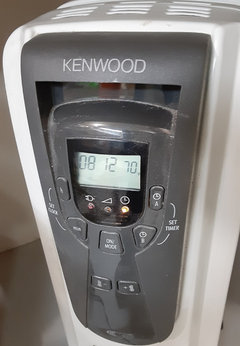
HTH
Sam HomeOwner
Original Author3 years agoThank you again, all! I'm been taking notes of all the wonderful suggestions and tips! It's all been so helpful - so grateful for your time :)
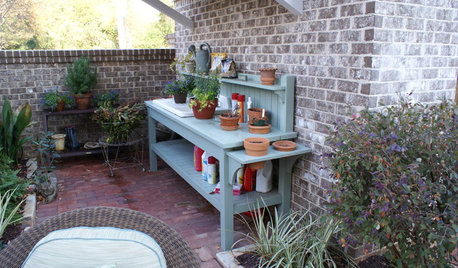
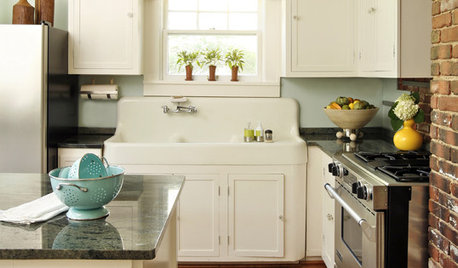
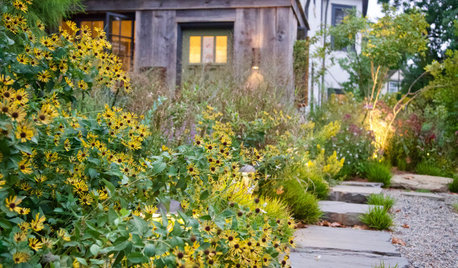
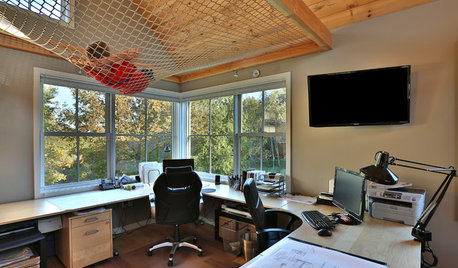


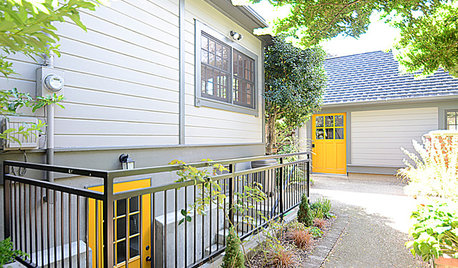
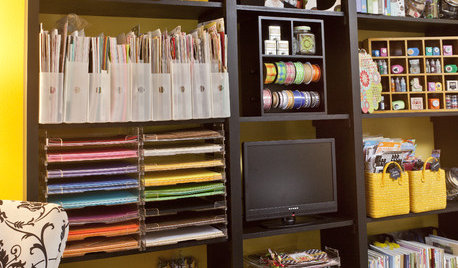
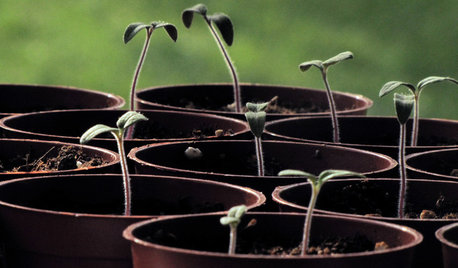
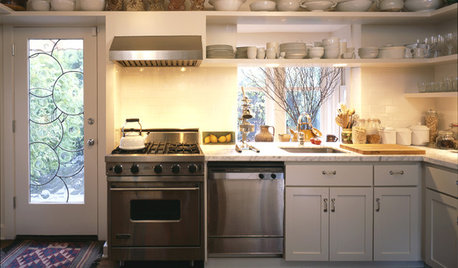






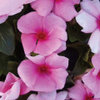
diggerdee zone 6 CT